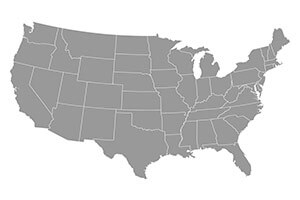
UNITED STATES
The yearly almond pollination event in California will be over by the time this issue comes out. Early reports suggested that the estimated 2 million colonies rented by growers to pollinate about 1 million acres of almonds did their job well. Despite earlier muddy conditions and a warm spell that caused almond blossoms to open earlier than expected, most growers seemed to be satisfied with this pollination season. Beekeepers saw their pollination rental incomes increase by an average of $10 to $15 per colony. Unfortunately, some commercial beekeepers were again battling crippling colony losses and weaker than normal bee populations this season. Colony thefts were also in the news a lot and it sounds like these thefts are on the increase, especially since pollination fees remain very attractive. The added moisture from rain and snow in the mountains will definitely help California’s struggling agriculture. However, many locations will need several seasons of good precipitation to return to normal ground moisture conditions.
The U.S. winter has generally been a mild one, although some locations battled prolonged cold spells that were hard on colonies. Despite many reports of better overwintering this season, some glaring exceptions exist. For example a number of commercial beekeepers in the Midwest and Southeast suffered crippling colony losses, sometimes hampering their efforts to provide bees for almond and other early season pollination. A number of explanations have been suggested such as more problems with varroa and the viruses it spreads, more pesticide losses or weather-related problems hurting colony survival odds and subsequent population buildup.
Reports suggest that interest in hobby beekeeping remains strong, judged by the large numbers of sign-ups for late winter and spring beekeeping classes around the country. As a result of this continuing growth, as well as the need for replacement colonies, many package bee and queen companies were booking up their early deliveries very quickly. In fact, some companies had stopped taking orders or were telling customers that they would have to wait until later in May or June to receive bee or queen orders.
The wholesale honey market continues to struggle with declining quotes on large lots of honey since they are now in direct competition from increasing amounts of cheaper foreign honey. Meanwhile, the market for small lots of wholesale honey, as well as the retail market, remains strong.
NORTHEAST
Beekeepers welcomed the warmer spring weather as they shifted into high gear for the new beekeeping season. Maple, willow and other early pollen sources were providing much needed early stimulation for colony brood rearing. Winter weather was a hodgepodge of mild temperatures mixed with occasional intense cold. Bees generally overwintered well with a few exceptions, especially among migratory beekeepers. Some beekeepers complained that their bees ate their stores early due to the milder winter. Feeding has been going on for some time now. Sugar patties and candy boards were used in late winter, but once temperatures warmed some, many beekeepers switched to syrup and began adding pollen patties to stimulate brood rearing. Many beekeepers had reserved packages, nucs or queens early for fear of not being able to lock in their order for early delivery. Indeed, quite a few bee companies booked up their early delivery dates fairly soon after the new year began.
MIDEAST
Maple, oak, henbit and assorted wildflowers came into bloom in February and March helping overwintered colonies to brood up for the spring season. Colony winter losses were generally low, despite some intensely cold weather earlier in the year. Some beekeepers reported sporadic cases of starvation, but many said they started feeding sugar patties or candy boards to prevent widespread loss of weaker colonies. However, demand for bees and queens is still expected to be heavy this spring and interest among new beekeepers continues to run high. Ground moisture conditions are mostly …


